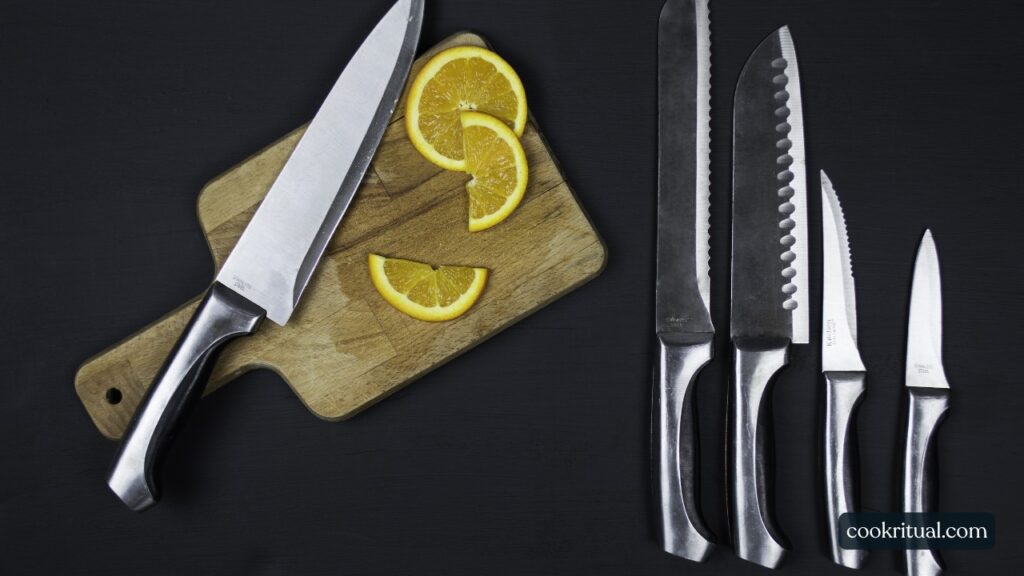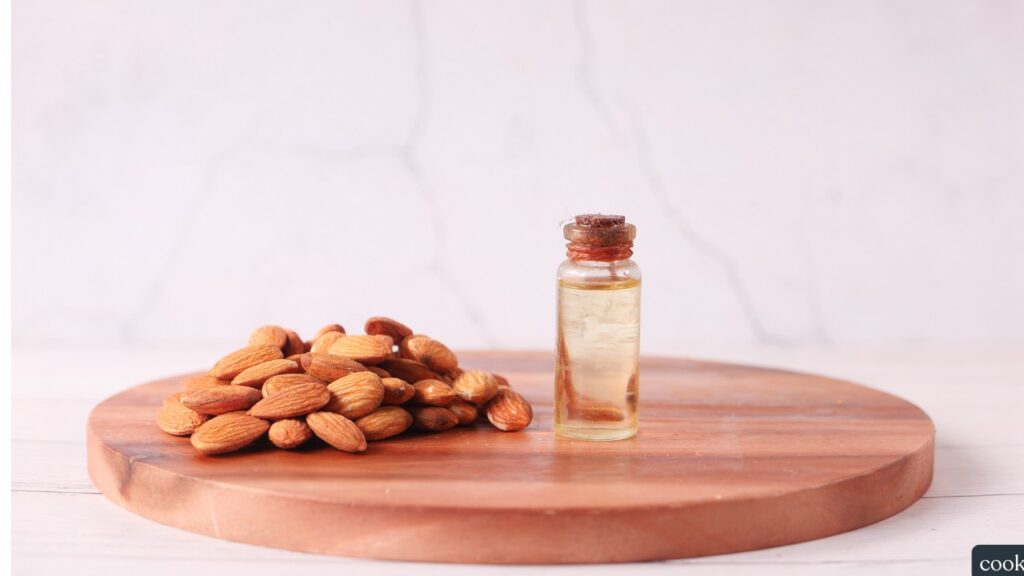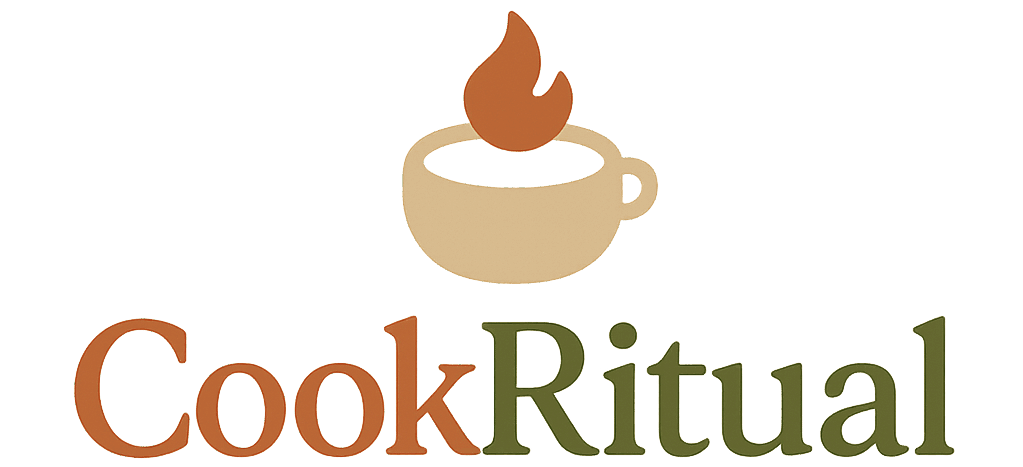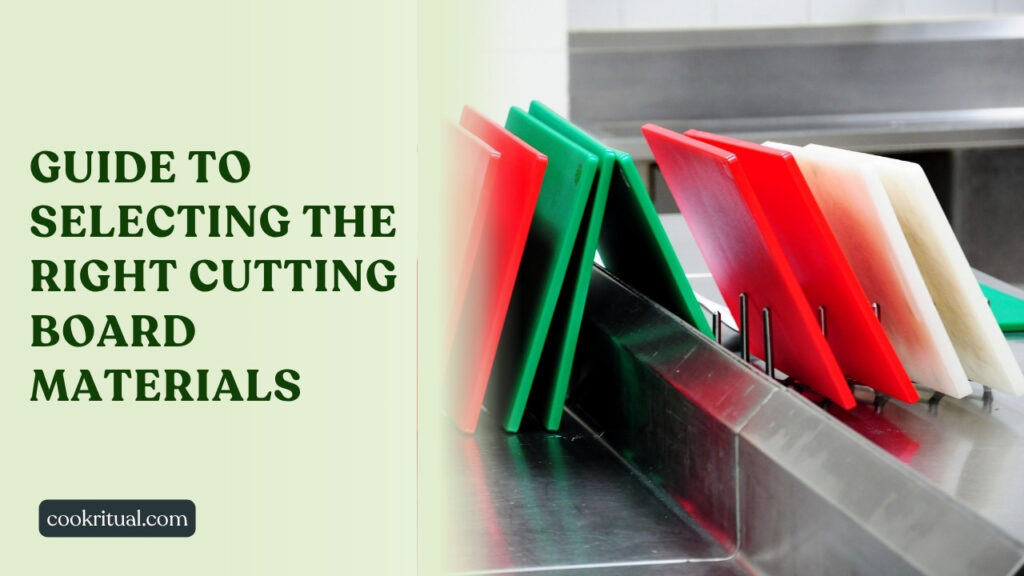The right cutting board can make or break your kitchen routine—it’s not just a surface, it’s a tool that affects food safety, knife longevity, and even your cooking speed.
When we think about essential kitchen tools, cutting boards rarely get the spotlight. Yet, they’re involved in almost every meal we prepare—whether we’re slicing vegetables for a salad, chopping chicken for a weeknight stir-fry, or prepping fruit for breakfast smoothies. And while grabbing any board might feel like a quick decision, the material you choose has a big impact on your cooking performance and hygiene.
Some boards protect our knives; others quietly dull them. Some are easy to sanitize; others require special care. And in the middle of a busy schedule, the last thing we want is a cutting board that warps, slips, or harbors bacteria.
In this guide, we’ll walk through the different types of cutting board materials, break down their pros and cons, and help you figure out which one fits your cooking style, values, and budget. Whether you’re all about eco-friendly products, care deeply about kitchen hygiene, or want a board that won’t wreck your expensive chef’s knife—we’ve got you covered.
Contents
- 1 1. Understanding the Different Cutting Board Materials
- 2 2. Key Factors to Consider Before Buying a Cutting Board
- 3 3. Cutting Board Maintenance and Hygiene Tips
- 4 4. Comparing the Best Cutting Board Materials Side by Side
- 5 5. Frequently Asked Questions (FAQs)
- 6 6. Conclusion and Final Recommendations
1. Understanding the Different Cutting Board Materials
1.1 Wood Cutting Boards: End Grain vs Edge Grain
Wood cutting boards are a favorite in many home and professional kitchens. They’re gentle on knives, long-lasting, and visually appealing. But not all wood boards are the same.
There are two main types: end grain and edge grain.
- End grain boards are made by arranging wood fibers vertically. This creates a soft surface that “heals” itself from knife marks. It’s great for keeping knives sharp and is often used by chefs.
- Edge grain boards have wood fibers laid horizontally. They’re more affordable than end grain and still knife-friendly, but they may show wear faster.
Wood is a natural, food-safe material that offers great performance. However, it needs regular care to avoid drying and cracking. According to Harvard Health, wooden boards should always be kept dry and oiled with food-grade mineral oil to prevent bacteria buildup.
Best for: Daily cooking, chopping vegetables, slicing bread, and anyone who wants a board that’s easy on their knives.
1.2 Plastic Cutting Boards: Affordable and Dishwasher Safe
Plastic cutting boards are popular for their low cost and easy cleaning. They come in different colors, which helps avoid cross-contamination between raw meat, veggies, and ready-to-eat foods.
Most plastic boards are dishwasher safe, making them ideal for busy kitchens. They’re lightweight, non-porous, and easier to sanitize after handling raw foods. In fact, the USDA recommends using plastic boards for raw meats because they can be cleaned at high temperatures.
However, plastic can develop deep knife grooves over time. These grooves may hold bacteria, even after washing. Replacing plastic boards regularly is key to keeping your kitchen safe.
Best for: Home cooks who prioritize sanitary cutting boards, quick cleanup, and meat prep.
1.3 Bamboo Cutting Boards: Sustainable but Harder Surface
Bamboo cutting boards are praised for being eco-friendly. Bamboo grows fast and doesn’t require replanting, making it a renewable choice. It’s also naturally resistant to moisture and bacteria.
While bamboo is less porous than traditional wood, it’s also harder. That means it may wear down knives faster, especially delicate blades. It’s best used for light chopping or as a serving board.
To keep bamboo boards in good shape, they should be cleaned with warm water and mild soap, then dried right away. Avoid soaking or putting them in the dishwasher, as this may cause splitting or warping. The Mayo Clinic advises treating bamboo the same way as wood to keep it food-safe and durable.
1.4 Glass and Stone Boards: Stylish but Dangerous for Knives

Glass and stone cutting boards may look sleek and modern, but they come with serious downsides. While they’re easy to clean and won’t absorb odors or stains, they’re very hard surfaces that can quickly dull your knives.
These boards are non-porous and dishwasher safe, which makes them easy to sanitize. However, their hard surface can cause your knife to slip, increasing the risk of cuts or injury. That’s why most chefs and home cooks avoid them for daily use.
The University of California’s Agriculture and Natural Resources warns that cutting on glass can damage both your blade and your food prep process. It’s best to use these boards only for serving cheese, fruits, or snacks, not for chopping.
Best for: Occasional use, serving food, or as a decorative piece—not daily cooking.
2. Key Factors to Consider Before Buying a Cutting Board
When shopping for a new kitchen cutting board, don’t just go for looks or price. Think about what you’ll use it for, how often, and what features matter most in your cooking routine.
2.1 Durability and Material Hardness
Some boards last for years, while others crack or warp after a few months. Wood and bamboo cutting boards tend to last longer with proper care. But they’re not as resistant to heat and moisture as plastic or glass.
Choose a board that’s tough but also knife-friendly. Hard surfaces like glass may be durable but can ruin your blade.
2.2 Food Safety and Sanitation
A good board should be easy to clean and not absorb bacteria. According to the CDC, raw meat should be cut on non-porous surfaces like plastic, while vegetables and bread can be handled on wood or bamboo.
Color-coded boards are also a smart choice. They help reduce the risk of cross-contamination, especially in shared or busy kitchens.
2.3 Cleaning and Maintenance
Dishwasher safe cutting boards are ideal for people who want less mess. Plastic boards can go right in the dishwasher, but wood and bamboo boards need handwashing and oiling. This adds time but keeps them from cracking.
Use food-safe mineral oil regularly to keep wooden boards in good shape. This simple step adds years to the life of your board.
2.4 Board Size and Thickness
Larger boards give you more room to prep meals but may be harder to store. Thin boards are lightweight but may slide on the counter. Look for non-slip cutting boards or models with rubber feet to stay safe.
Pick a size that fits your kitchen, your counter, and your storage space.
2.5 Compatibility with Knives
Not all boards are safe for all knives. Hard surfaces dull knives faster, especially sharp or delicate ones. Wooden and plastic boards are better if you use high-quality blades often.
For long-term savings, it’s smart to use a board that won’t damage your favorite knife.
3. Cutting Board Maintenance and Hygiene Tips
Keeping your cutting board clean is one of the easiest ways to protect your health and make your kitchen safer.
3.1 How to Clean and Disinfect Each Type
- Plastic boards can go in the dishwasher or be cleaned with hot, soapy water.
- Wood and bamboo boards should be washed by hand and dried right away. Use a mix of vinegar and water to kill germs.
- Avoid soaking any board, especially wood—it can warp or crack.
For extra cleanliness, the USDA suggests using a bleach-water solution (1 tablespoon bleach per gallon of water) for plastic boards after cutting raw meat.
3.2 How to Oil Wooden Boards

Oiling helps keep wood boards smooth and prevents them from drying out.
- Use food-grade mineral oil once a month.
- Rub the oil on with a clean cloth.
- Let it soak in overnight and wipe off any extra the next day.
This routine will keep your board looking great and lasting longer.
3.3 Preventing Warping and Cracking
- Don’t soak wooden boards in water.
- Always dry them upright.
- Avoid extreme heat, like putting them on a hot stove or in the dishwasher.
Taking these small steps helps avoid damage and keeps your board sanitary and safe.
4. Comparing the Best Cutting Board Materials Side by Side
4.1 Material Comparison Table: Pros and Cons

Below is a quick breakdown of the most common cutting board materials to help you choose what fits your kitchen needs best.
| Material | Pros | Cons | Best Use |
|---|---|---|---|
| Wood (End Grain) | Knife-friendly, long-lasting, self-healing surface | Needs oiling, not dishwasher safe | Daily prep, veggies, bread |
| Wood (Edge Grain) | Affordable, gentle on knives | Shows wear faster | General use |
| Plastic | Dishwasher safe, lightweight, low cost | Scratches easily, traps bacteria | Raw meat, quick cleanup |
| Bamboo | Eco-friendly, less porous | Hard on knives, needs oiling | Light chopping, serving |
| Glass/Stone | Stylish, non-porous, easy to clean | Dulls knives, slippery | Cheese boards, display use |
This table helps make it clear: if you want sanitary cutting boards for raw meat, go with plastic. If you’re focused on eco-friendly kitchen tools, bamboo may be your best bet. And for the perfect knife-friendly board, end grain wood is hard to beat.
4.2 Choosing Based on Cooking Style
- Meal preppers and busy professionals who cook in batches should pick large, sturdy boards that are easy to sanitize.
- Casual home cooks might prefer lightweight plastic or bamboo boards.
- Knife lovers and foodies may want to invest in an end grain wood board to keep blades sharp longer.
Matching your board to your cooking style saves time and helps you cook more safely.
5. Frequently Asked Questions (FAQs)
5.1 Can I use the same cutting board for meat and vegetables?
It’s safer to use separate boards. The CDC recommends using one board for raw meats and another for fruits, veggies, or bread to prevent cross-contamination.
5.2 Are wood cutting boards safe for meat?
Yes, but only if cleaned properly. Wash them with hot, soapy water and dry them quickly. For added safety, disinfect with vinegar or a diluted bleach solution. Still, plastic boards are often better for raw meat because they can go in the dishwasher.
5.3 How often should I replace my cutting board?
If your board has deep cuts, cracks, or warping, it’s time to replace it. For plastic cutting boards, replace them every 6–12 months or sooner if they’re heavily scratched. Wood and bamboo boards can last for years with proper care.
5.4 What’s the best cutting board for knives?
End grain wood cutting boards are best for knives. They’re soft enough to protect the blade edge and hard enough to be durable. Avoid glass, granite, or ceramic boards if you care about keeping your knife sharp.
6. Conclusion and Final Recommendations
Choosing the right cutting board material is a small step that makes a big difference in your kitchen. It affects your cooking speed, food safety, and even how long your knives last.
If you want something that’s easy to clean and safe for raw meat, go with plastic. For a beautiful, durable, and knife-friendly surface, end grain wood is the top choice. And if sustainability matters to you, bamboo boards offer an eco-smart option—just keep your blades sharp.

